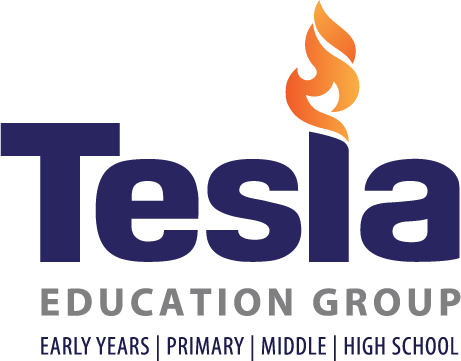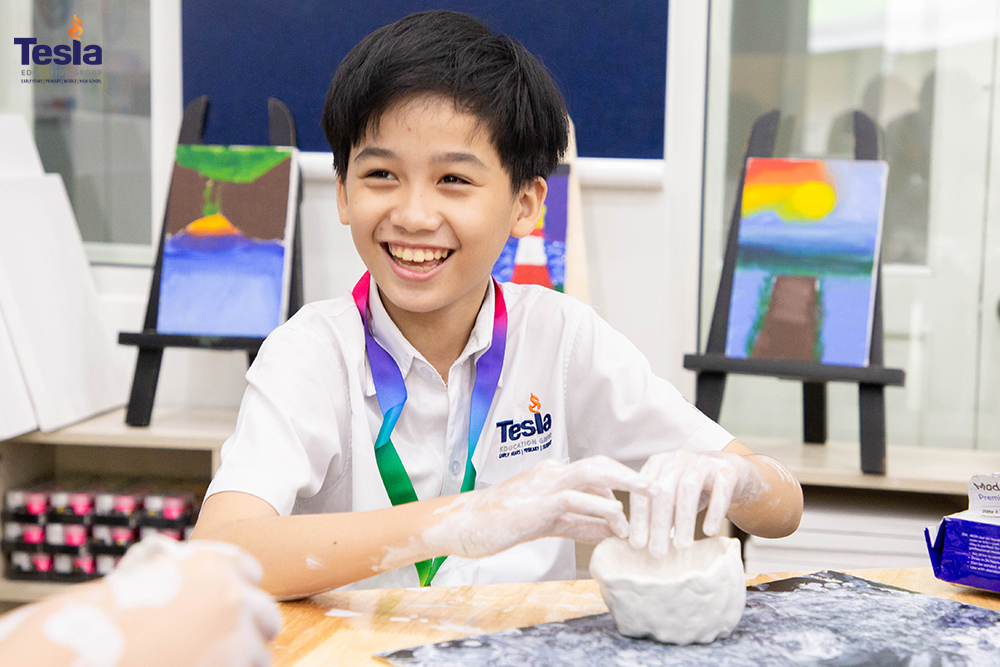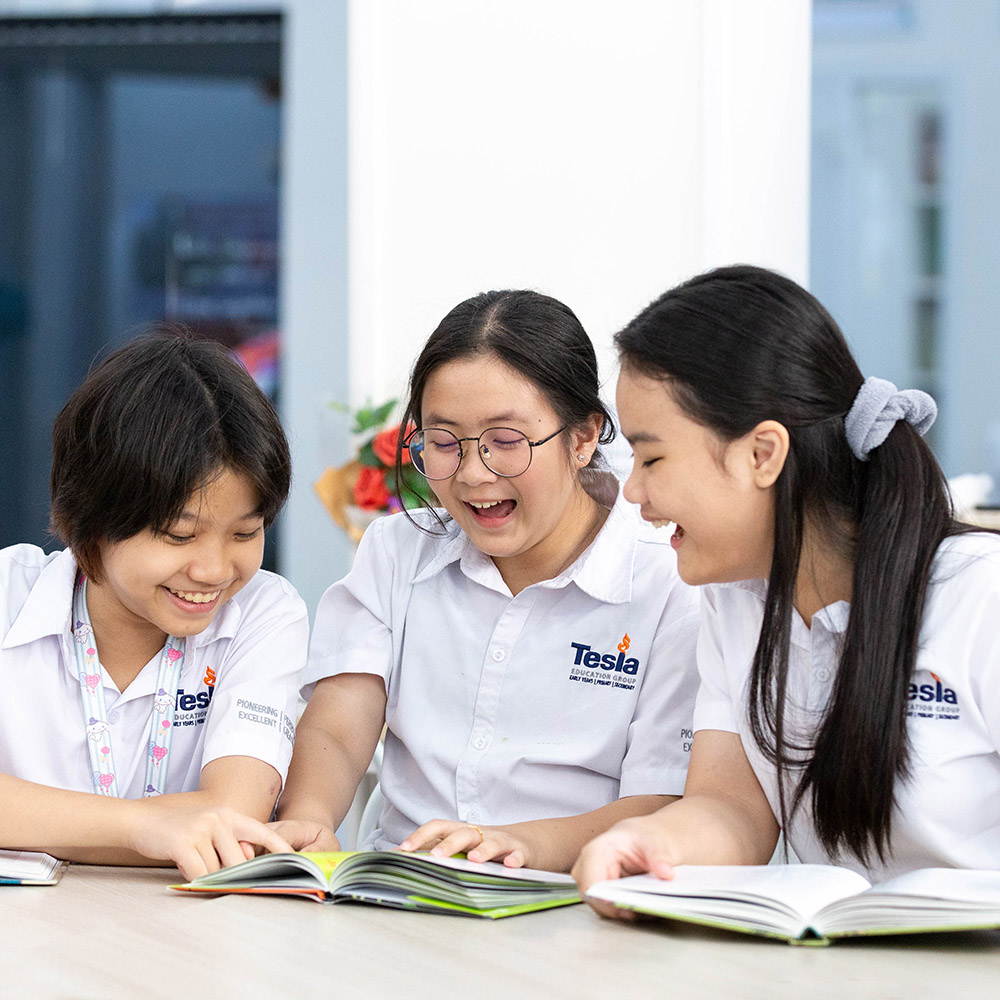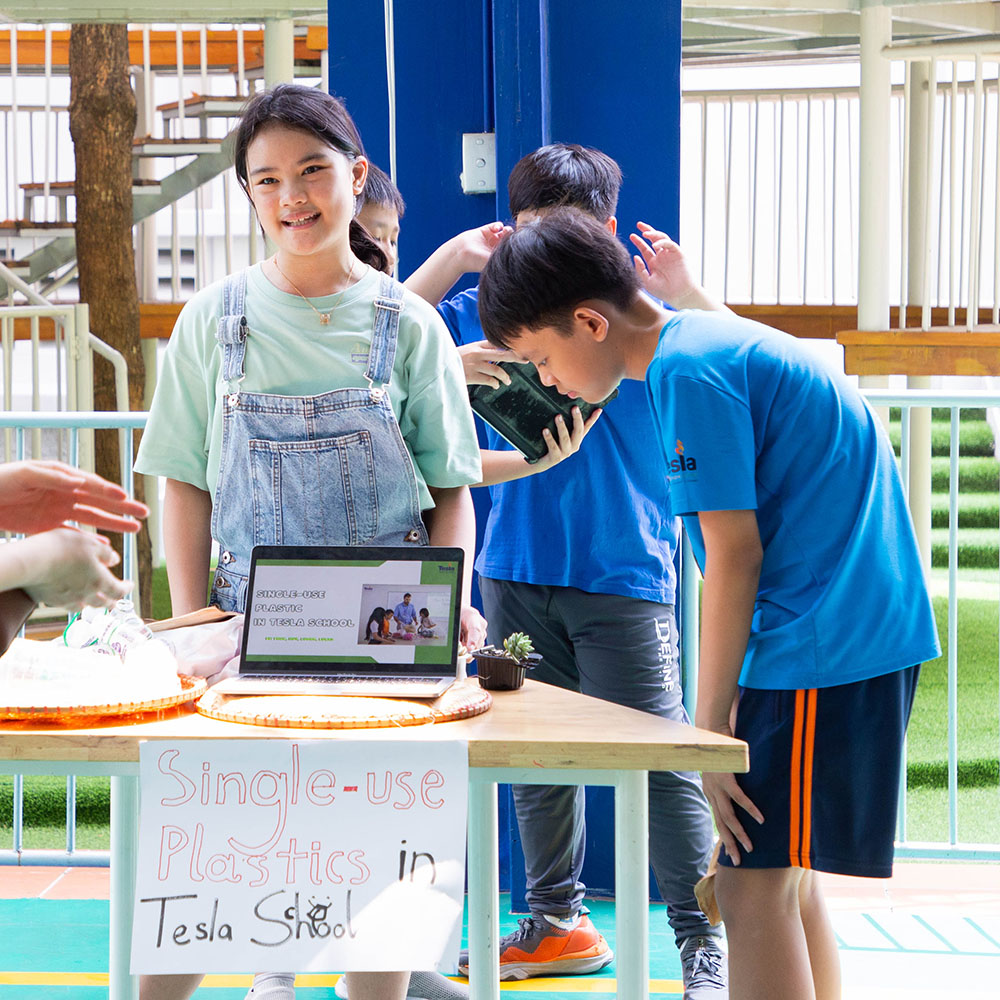Tesla Talk Week April 16th 2021

Tim Vanderpool
Director of Studies
Newsletter 16th April, 2021
Last week I wrote about additive bilingualism. The language acquisition theory adopted at Tesla encourages students to continue to develop their native tongue while acquiring English. The theory is focused on the goal of cognitive development, where replacing the native tongue with another language interferes with the natural acquisition of new concepts and skills. Just like any theory, it needs to be effective in practice so today I will address what it looks like in the classroom.
Picture two students working on a problem together for a project in their science class. Their English is still in the development stages, but all material and resources provided by the teacher are in English. As they do research and learning activities to understand the new knowledge and skills they are encouraged to collaborate in English when they can but use Vietnamese when they need to ensure they both clearly understand the concepts. Throughout their project, they transfer between the two languages at their comfort level and ultimately they submit their project in English. Throughout the project, they are building both languages in the context of science.
This form of communication utilized in the classroom is called translanguaging. Translanguaging is a strategy based on modern research that tells that languages are not separate in the mind of a multilingual person. Their minds are a holistic system of linguistic resources that can be utilized as needed for appropriate communication purposes. Therefore, at Tesla, we embrace the idea that all students are developing multiple languages and utilize instructional practices to maximize the prior knowledge and skills of every learner.
Next week I will write about Agency. The core principle in the International Baccalaureate (IB) program focuses on shifting the responsibility for learning to the students.
Thank you,
Tim Vanderpool
Director of Studies

Ms. Huynh Thi Kim Ngoc
Grade 4 Homeroom Teacher
The 4th grade students have completed the final report about Tay Nguyen for History and Geography subject. They researched and presented about the effects of people migrating from other provinces to live in the Central Highlands.
Through this opportunity, students learned how to look up information, work in groups, use powerpoint, and present to the whole class. Besides, during the Science class, the students took the initiative and used Spider Web Discussion to lead group discussion in a positive and orderly manner. It is wonderful to see children working more and more independently.





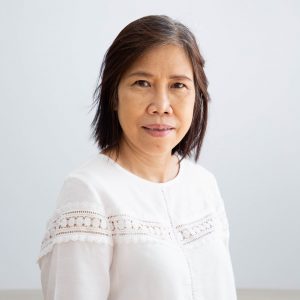
Ms. Nguyen Thi Quynh Dien
MYP Coordinator
Grade 4 End of Unit of Inquiry 5
This week Grade 4 students were happy to complete their big paintings of hot-air balloons, related to the Unit of Inquiry they have been studying. Then they learned some new art techniques, using papier-mâché to create globes. They enjoyed working independently to produce layers of paint for their work. They learned from one another how to make their paintings perfect – walking around to observe their classmates’ work and sharing their experiences. The teacher was there to guide them when necessary.
They also worked collaboratively in groups to hang their paintings on boards for the school exhibition. Looking at their own paintings and their friends’ paintings, they were able to judge the strengths and weaknesses.
Well done, Grade 4 students!





Ms. Nguyen Hoang An Khanh
English Teacher
For the last term, Grade 3 students learn about the Earth and the universe. They have learned about what cause global warming and the effects of it. Next week is the Earth Day (April 22) and they decided to create some posters to help other students aware of all the global warming causes and also to show their care for the Mother Earth.





Mr. Tran Cong Nhat Phuong
ICT&DT Teacher
A busy week with many new plans has passed at Tesla, but the students remain excited and enthusiastic during the ICT class. They participated in a thrilling race of snails. The snail race was done between the G3 and G4 students after last week Robot assembly lessons.
This week lesson was about utilising what they learnt to operate the Snail Robot. During the 30 minute challenge, the students researched about the snail movements and did a test run before competing against each other in groups. The race was in 1 minute, and the team whose snail moved the farthest would win the race. A G4 team won the race with their snail moving 87cm. A G3 team broke their senior record by completing the race in less than a minute.





Mr. Carlos Boyano
ICT, Maths, and AI Teacher
The Scratch project for this week was called “Pumking Bowling”. During this project students were able to create a bowling game.
Again students worked independently with the aid of the booklet (lesson plan) in order to achieve the coding task by themselves with minimun help from the teachers.







Ms. Le Thi Hong Son
Head of Early Years ( Tan Binh Campus)
Shaping activities are always an interesting topic for students. This activity helps students develop good ethical qualities such as perseverance, the habit of always completing work, dexterity of hands, and creativity.




Update News
1. The Science and Technology Week for Primary students from 26 to 29 April 2021
2. Announcement of School Holidays in April
As per our 2020-2021 School Calendar, Tesla would like to inform Parents of the holiday plan in April:
- Hung King Commemoration Day: 21 April 2021 (Wednesday)
- Reunification Day: 30 April 2021 (Friday)
- Compensation for Labour Day: 03 May 2021 (Monday)
3. On March 20, 2021 (Tuesday), Early Years students will have a field trip to “Tam Nong” farm in District 12
Admissions
Important information for our current families and friends in regards to any younger siblings / younger children that you may like to enroll for the New School Year August 2021 – 2022. Tesla Admissions is now open, please apply to ensure that your place is secured early, as some grades may fill up fast creating a waitlist for August 2021.
Please submit the Inquiry Form at http://beta.tesla.edu.vn/en/admissions/saving-program/, and the Admissions Team will contact you.
If you would like to receive more information regarding enrollment, please contact Tesla at: admission@tesla.edu.vn.

Limited Scholarships available now for new MYP students 2021-2022
Tesla is pleased to offer a limited number of Academic Scholarships ranging from 25% to 100% for new MYP students for the next school year 2021-2022. Please note the closing date is coming soon on April 28th, 2021, please apply now!
If you would like to receive more information regarding enrollment, please contact Tesla at: admission@tesla.edu.vn.

